Event Review: Power electronics aiding the electrical transmission system: FACTS and HVDC
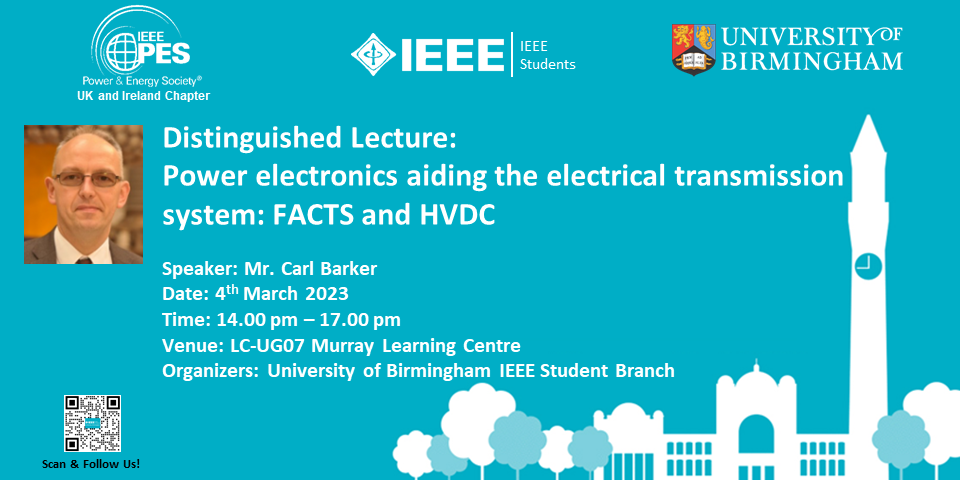
The University of Birmingham IEEE Student Branch co-hosted a Distinguished Industry Lecture at the University of Birmingham from 2 pm to 5 pm on 4th March 2024. During the lecture, Prof. Xiao-Ping Zhang, the UoB IEEE Student Branch Counsellor, invited Carl Barker, a senior expert from GE Vernova, to give a presentation on HVDC & FACTS. This event was sponsored the School of Engineering, University of Birmingham, and co-hosted by CIGRE UK NGN UoB Hub. In total more than 20 attendees showed up in the lecture, including MSc students, PhD students and academic staff.

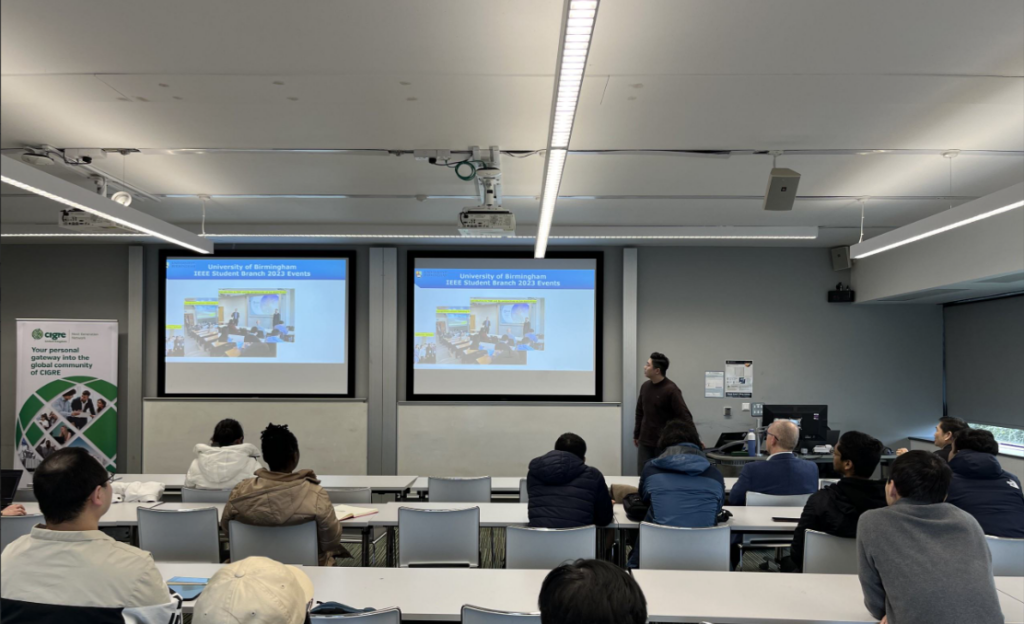
To start the event, Prof. Xiao-Ping Zhang welcomed everyone and briefly introduced the programme and agenda of this event. Mr. Zixuan Jia, the Chair of the Uob IEEE Student Branch (the local co-organiser of this event), gave a brief introduction of UoB IEEE Student Branch.
After introducing all organisers, Prof. Zhang introduced the speaker, Mr Carl Barker, to the audience. Carl is a Chartered Engineer in the UK, a member of the IET (UK), a Senior Member of the IEEE, a distinguished Member of CIGRE. Carl holds a B.Eng from Staffordshire Polytechnic and a M.Sc. from Bath University in the UK. He joined GE Vernova’s Grid Solutions in Stafford, UK in 1989, initially working on the design and development of individual HVDC and SVC projects then becoming System Design Manager, responsible for all technical aspects of HVDC projects. Carl is, at present, a Consulting Engineer within the business providing technical direction and guidance across several disciplines.
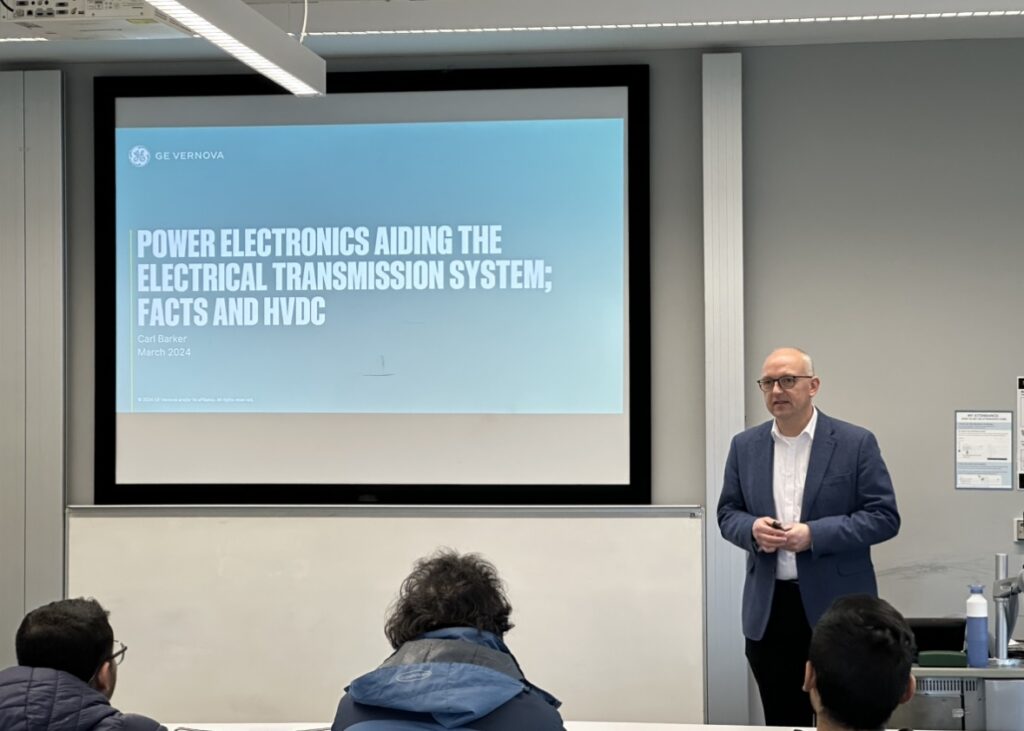
Carl’s presentation started with the fundamental knowledge of reactive power generation and demand. He introduced the overview and comparisons of HVDC and HVAC, followed by the needs of reactive power on the transmission line. Then the characteristics of FACTS devices were presented and analysed in detail such as MSCDN, TCR, Fixed Series Capacitors, TSC, STATCOM, etc.
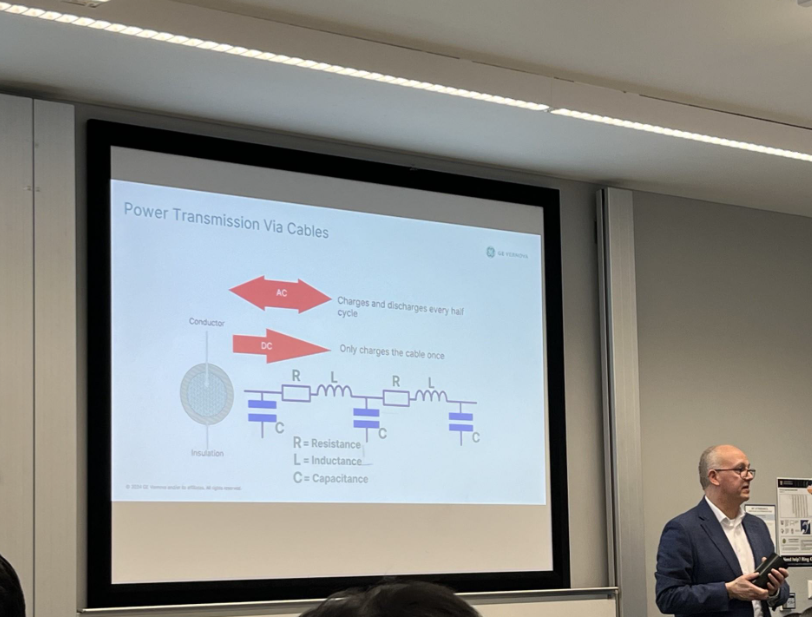
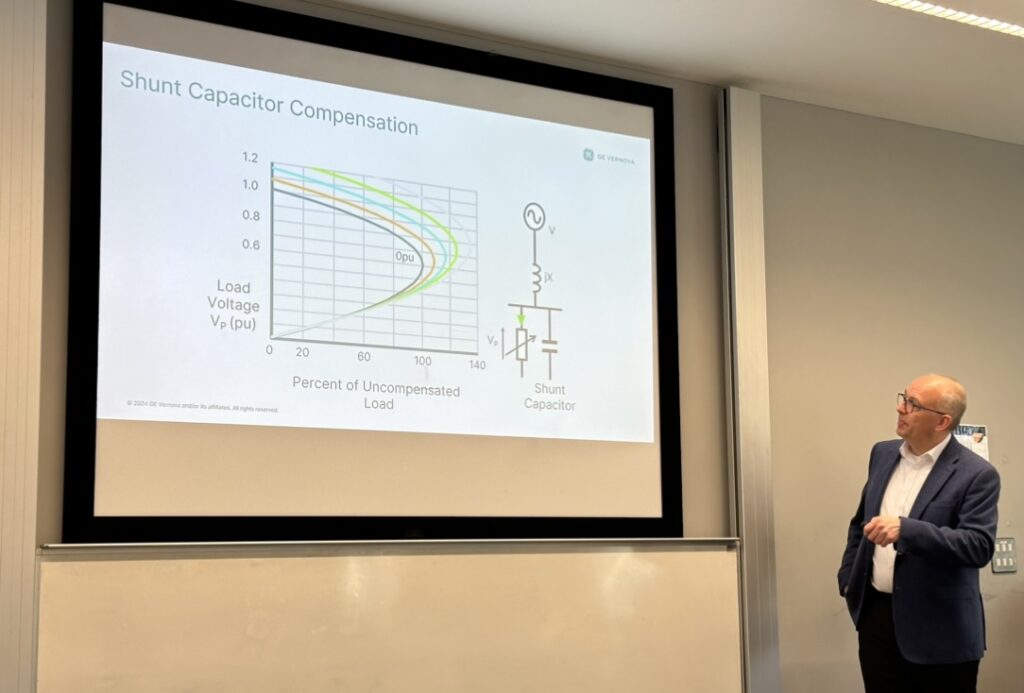
To further demonstrate the comparisons between HVDC and HVAC, Carl showed a piece of the HVDC transmission line cables to enable all students to visualise this part in practical engineering. In the introduction of the LCC-HVDC and VSC-HVDC, Carl again brought a thyristor show to students, to further demonstrate the challenges that the installation process faces, such as several tons of pressure will be required on each thyristor when stacking hundreds of them together to form a thyristor valve. A real IGBT was also presented to the audience to show explicitly what the practical IGBT looks like.
Carl’s comprehensive introduction to HVDC & FACTS and his insightful comments on students’ questions have had a deep impression on all the audience. Some students commented in the post-event feedback survey “The professor’s explanation of the theory of HVDC was very profitable for me”, “I’m very likely to apply the knowledge gained from this lecture in your academic or professional pursuits”, which demonstrates that this distinguished lecture is a big success.
After a 10-min Q&A session, Prof. Xiao-Ping Zhang announced the closing remarks, followed by a networking chat.
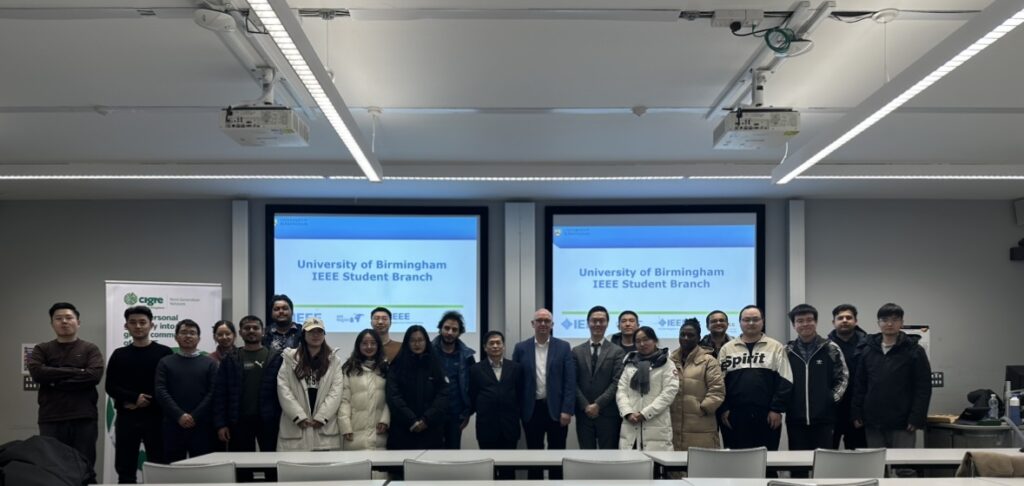
Again, we appreciate the Speaker, Mr Carl Barker’s wonderful presentation and thought-provoking insights in HVDC & FACTS, which have shared invaluable knowledge with all the audience. We also thank the UoB IEEE Student Branch Counsellor, Prof. Xiao-Ping Zhang’s consistent support in coordinating and organising such wonderful Distinguished Industry Lectures. Last but not least, our appreciation goes to IEEE UK and Ireland and UoB IEEE Student Branch for providing such a valuable platform, the School of Engineering of University of Birmingham for providing the venue, all local co-organisers for making this lecture smoother, and all the audience for their attendance.
